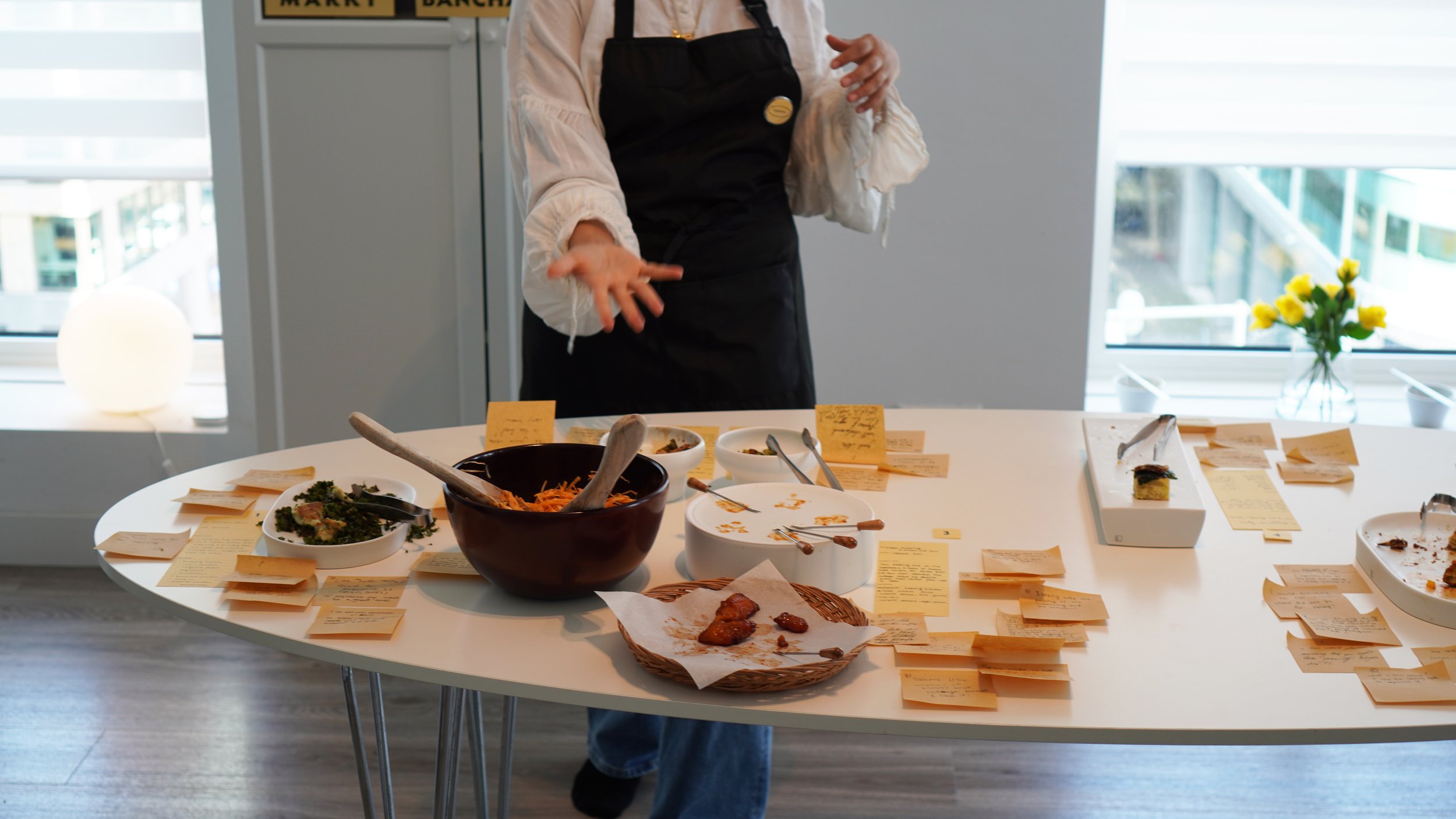Creating Korean ‘Banchan’ in a Dutch Setting: Using Personal Stories for Cultural Fusion
Exploring how personal stories and local ingredients come together to reinvent Korean Banchan for a Dutch audience.
By Sueyoon Lee | AUG 10, 2024
one participant explaining her banchan dish. photo credit: kim & soyoun
Through a week-long reflection and a creative workshop, participants combined personal stories and local ingredients to reimagine Korean Banchan in a Dutch context—resulting in innovative, culturally mixed dishes ready for a final showcase.
In August 2024, my project partner Yeonju Jeon and I contributed to the Banchan Project, initiated by Kim & Soyoun, to explore how Korean Banchan—a staple of Korean cuisine—could be creatively adapted to the Dutch context. Drawing on our expertise in creative facilitation and a human-centered design approach, we guided participants in blending their personal stories and cultural backgrounds with Dutch ingredients, resulting in unique and culturally mixed Banchan dishes. This wasn’t just about food—it was about identity, memory, and the blending of cultures.
How It Unfolded
The process was designed to move participants from reflection (through the diary study) to creation (through the co-creation workshop):
Diary Study (7 Days):
The diary study was a key preparatory step, designed to help participants reflect on their food habits before diving into the co-creation workshop. Over 7 days, participants engaged with specific questions and tasks to deepen their awareness of how they interacted with food. We asked them to observe and label the ingredients in their fridge, reflect on their memories with Banchan, and analyze the balance of taste, nutrition, and color in their daily meals. To further enrich this reflection, we provided historical facts about Banchan in both the Korean and Dutch contexts.
This diary study was essential for extracting the full potential of each participant. A 2-hour workshop alone wouldn’t allow enough time to explore these deep connections, but through the week-long reflection process, participants built up ideas slowly and consistently. By the time they arrived at the workshop, they were well-prepared and had a rich understanding of the concepts we would be working with.
Co-Creation Workshop (2 Hours):
The workshop itself was divided into two parts: sharing and creating. In Part 1, participants introduced themselves and shared their favorite dishes, as well as their experiences with Banchan and Dutch food culture. This allowed them to see the similarities and differences in how each person approached cooking, sparking ideas for the next stage.
In Part 2, participants were encouraged and inspired to create new Banchan recipes that expressed and incorporated their personal stories and skills while also adapting Dutch culture into Korean-style Banchan. The session concluded with each participant having a concrete idea and an illustration of their unique Banchan recipe, which served as the foundation and preparation for their Banchan presentation in the upcoming 'Dinner' session the following week.
Personal Stories as Inspiration
What stood out to us throughout the process was how deeply personal stories influenced the recipes participants created. One participant, for example, used childhood memories of family meals as a foundation for their fusion dish, combining traditional Korean ingredients with Dutch elements to create something entirely new. It was clear that their personal experiences, intertwined with their cultural backgrounds, shaped their approach to cooking and adaptation.
Project Continuation
Following the workshop, Kim & Soyoun organized the next phase of the project. In the following week, participants cooked their own dishes based on the ideas developed during the workshop. The group then gathered for a dinner session to share and celebrate the results. We were thrilled to see the creativity, quality, and variety of the dishes—each one a unique expression of the participants' personal stories and individual styles. The fusion of Dutch and Korean influences was clear in every dish, reflecting the heart of the project: blending cultural identities through food.
